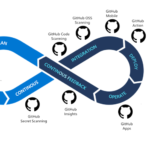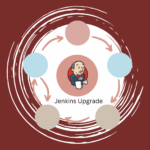In today’s hyper-competitive software landscape, delivering high-quality products rapidly is no longer optional - it’s essential. Organizations adopting continuous testing and monitoring within their DevOps pipelines report an impressive 61% improvement in software quality. This blog post dives deep into how continuous integration (CI) and continuous testing catch defects early, reduce rework costs, and elevate customer satisfaction. We’ll also provide a practical, step-by-step guide to implementing continuous testing using Python with GitHub Actions and Jenkins, empowering you to replicate these results in your projects.
Why Continuous Testing and Monitoring Matter
Traditional software testing often occurs late in the development cycle, leading to costly defect fixes and delayed releases. Continuous testing integrates automated tests throughout the software delivery pipeline, enabling teams to detect issues immediately after code changes. Continuous monitoring complements this by tracking application health and performance in production, ensuring ongoing quality and reliability.
Key Benefits
- Early Defect Detection: Bugs are caught before they escalate, reducing costly rework.
- Faster Feedback: Developers receive immediate insights, accelerating development velocity.
- Higher Quality Deliverables: Continuous testing ensures code meets quality standards consistently.
- Improved Customer Satisfaction: Reliable software reduces downtime and enhances user experience.
- Cost Efficiency: Less time spent on bug fixes translates to significant savings.
Understanding the 61% Quality Improvement Statistic
According to industry surveys, 61% of organizations adopting DevOps practices, including continuous testing and monitoring, report better quality deliverables. This figure underlines the transformative impact of embedding quality checks throughout the software lifecycle rather than relying on end-stage testing alone.
One notable example is Capital One, which implemented continuous testing pipelines integrated with Jenkins and GitHub Actions. They reported a dramatic reduction in post-release defects and faster time-to-market, directly boosting customer trust and satisfaction. For more details, see their DevOps case study here.
Core Concepts and Trends in Continuous Testing and Monitoring
Continuous Integration (CI) and Continuous Delivery (CD)
CI/CD pipelines automate building, testing, and deploying software. Continuous testing is embedded within these pipelines to validate code changes at every stage.
Shift-Left Testing
Testing activities move earlier in the development process, catching defects as soon as code is written.
Test Automation Frameworks
Popular frameworks like pytest for Python, Selenium for UI testing, and JUnit for Java enable automated test execution integrated into CI/CD tools.
Monitoring Tools
Tools like Prometheus, Grafana, and New Relic provide real-time insights into application performance and errors post-deployment.
Practical Example: Implementing Continuous Testing with Python, GitHub Actions, and Jenkins
Let’s walk through a simple “Hello World” Python project to demonstrate continuous testing with GitHub Actions and Jenkins. This example will help you set up automated testing pipelines that catch defects early.
Step 1: Create a Simple Python Project
hello_world/
├── app.py
├── test_app.py
├── requirements.txt
└── README.md
app.py
def greet(name):
return f"Hello, {name}!"
if __name__ == "__main__":
print(greet("World"))
test_app.py
from app import greet
def test_greet():
assert greet("World") == "Hello, World!"
assert greet("Alice") == "Hello, Alice!"
requirements.txt
pytest==7.3.1
Step 2: Set Up GitHub Actions Workflow
Create a file .github/workflows/python-test.yml in your repo:
name: Python CI
on: [push, pull_request]
jobs:
test:
runs-on: ubuntu-latest
steps:
- uses: actions/checkout@v3
- name: Set up Python 3.10
uses: actions/setup-python@v4
with:
python-version: 3.10
- name: Install dependencies
run: |
python -m pip install --upgrade pip
pip install -r requirements.txt
- name: Run tests
run: |
pytest
This workflow triggers on every push or pull request, installs dependencies, and runs tests automatically.
Step 3: Jenkins Pipeline Setup
Assuming Jenkins is installed and configured, create a Jenkinsfile in the project root:
pipeline {
agent any
stages {
stage('Checkout') {
steps {
checkout scm
}
}
stage('Setup Python') {
steps {
sh 'python3 -m venv venv'
sh '. venv/bin/activate && pip install -r requirements.txt'
}
}
stage('Run Tests') {
steps {
sh '. venv/bin/activate && pytest'
}
}
}
post {
always {
junit '**/test-results.xml'
}
}
}
Configure Jenkins to run this pipeline on your repository. It will check out code, set up Python environment, and run tests on each build.
Step 4: Monitor and Act on Results
Both GitHub Actions and Jenkins provide detailed test reports and logs. Teams can quickly identify and fix defects before merging code or releasing software.
Challenges in Continuous Testing and How to Overcome Them
- Test Maintenance Overhead: Automated tests require upkeep as code evolves. Solution: Adopt modular test design and regular reviews.
- Flaky Tests: Intermittent test failures reduce confidence. Solution: Use stable test data and isolate tests.
- Infrastructure Complexity: Setting up CI/CD pipelines can be complex. Solution: Use managed services or templates and invest in team training.
- Performance Testing Integration: Incorporating load tests into CI is challenging. Solution: Schedule performance tests separately but integrate results.
Future Outlook and Emerging Trends
- AI-Powered Testing: Tools leveraging AI to generate and maintain tests automatically.
- Shift-Right Testing: Increased focus on monitoring and testing in production using real user data.
- Containerized Testing Environments: Using Docker and Kubernetes for consistent test environments.
- Test Observability: Enhanced visibility into test execution and failures through analytics dashboards.
Summary
Continuous testing and monitoring are game changers in software development, enabling teams to improve quality by over 60%, reduce costs, and delight customers with reliable products. By embedding automated tests in CI/CD pipelines and leveraging tools like GitHub Actions and Jenkins, organizations can detect defects early and maintain high standards throughout the software lifecycle.
Start small by automating tests for your core features and gradually expand coverage. Monitor your pipelines and application health continuously to catch issues before they impact users. The future belongs to teams that make quality a continuous, integral part of their process.
Further Reading & References
- Capital One DevOps Case Study
- GitHub Actions Documentation
- Jenkins Pipeline Documentation
- Martin Fowler on Continuous Integration
- Atlassian Guide to Continuous Testing
- pytest Official Site
Ready to take your software quality to the next level?
Whether you are looking to implement continuous testing, optimize your DevOps pipeline, or need expert guidance, we’re here to help. Contact us today to discuss your project and discover how we can drive measurable improvements together.
Get in Touch


